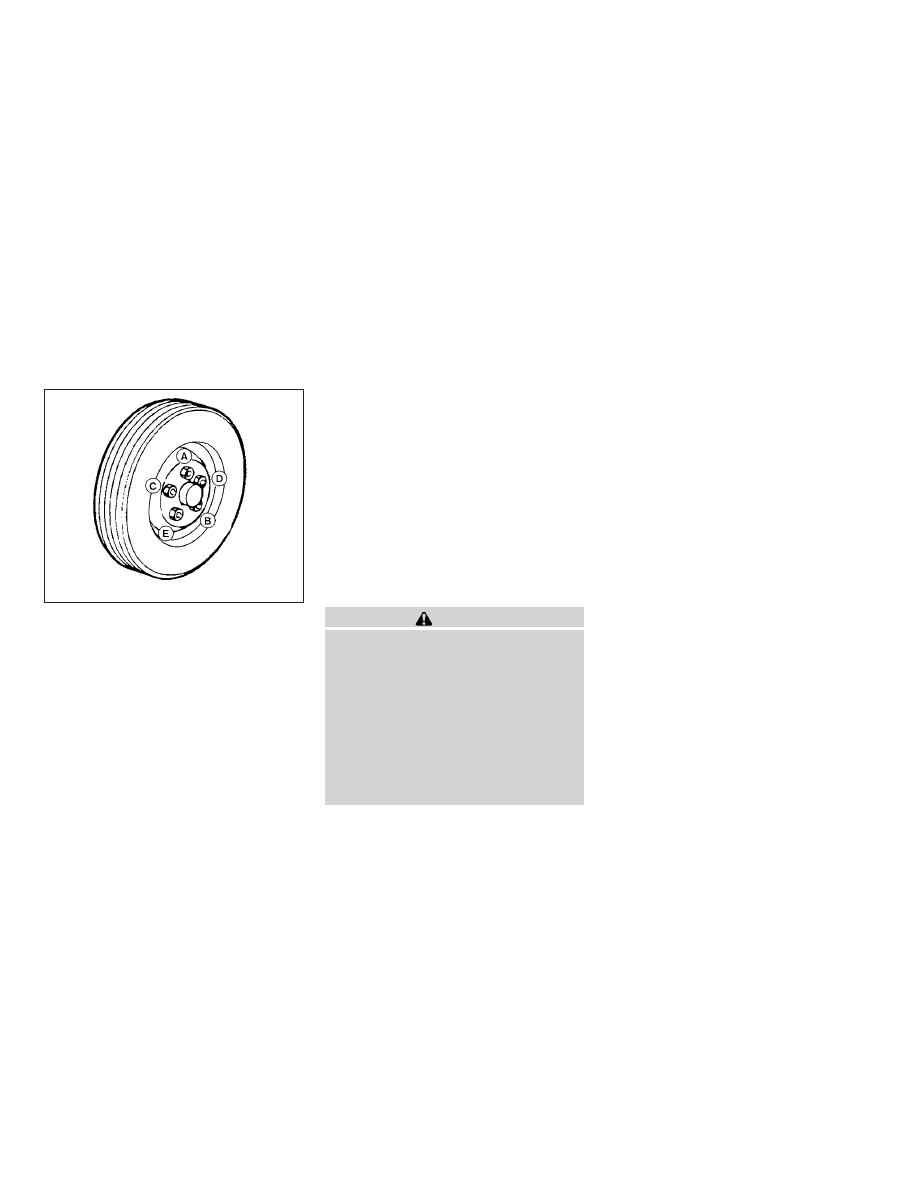Nissan Rogue Hybrid (2019 year). Manual - part 25

Installing the spare tire
The spare tire is designed for emergency
use. For additional information, refer to
“Wheels and tires” in the “Do-it-yourself ”
section of this manual.
1. Clean any mud or dirt from the surface
between the wheel and hub.
2. Carefully put the spare tire on and
tighten the wheel nuts finger tight.
3. With the wheel nut wrench, tighten
wheel nuts alternately and evenly in the
sequence illustrated until they are tight
(
䊊
A
,
䊊
B
,
䊊
C
,
䊊
D
,
䊊
E
).
4. Lower the vehicle slowly until the tire
touches the ground. Then, with the
wheel nut wrench, tighten the wheel
nuts securely in the sequence illus-
trated (
䊊
A
,
䊊
B
,
䊊
C
,
䊊
D
,
䊊
E
). Lower the ve-
hicle completely.
5. Securely store the jacking equipment
in the vehicle. When storing the tool kit,
it is recommended to tighten the bag
securely with the attached band to
prevent movement of the tools, other-
wise noise may occur.
6. Securely store the flat tire in the vehicle.
WARNING
∙ Incorrect wheel nuts or improperly
tightened wheel nuts can cause the
wheel to become loose or come off.
This could cause an accident.
∙ Do not use oil or grease on the wheel
studs or nuts. This could cause the
nuts to become loose.
∙ Retighten the wheel nuts when the
vehicle has been driven for 600 miles
(1,000 km) (also in cases of a flat tire,
etc.).
As soon as possible, tighten the wheel
nuts to the specified torque with a
torque wrench.
Wheel nut tightening torque:
83 ft-lb (113 N·m)
The wheel nuts must be kept tightened
to specification at all times. It is recom-
mended that wheel nuts be tightened to
specifications at each lubrication inter-
val.
Adjust tire pressure to the COLD pres-
sure.
COLD pressure: After vehicle has been
parked for 3 hours or more or driven less
than 1 mile (1.6 km).
COLD tire pressures are shown on the
Tire and Loading Information label af-
fixed to the driver side center pillar.
WCE0056
6-10
In case of emergency